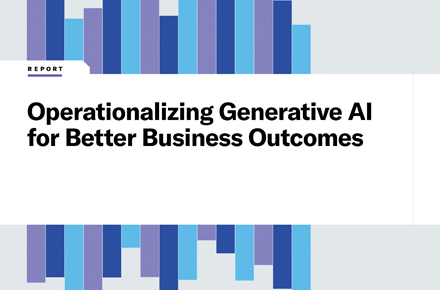Building cloud operations for sustained business value: A leadership perspective
juillet 29, 2025 / Mike Thomson
Short on time? Read the key takeaways:
- Cloud success depends more on operational discipline than technology sophistication
- Organizations that treat cloud as an operating model, not just infrastructure, see measurably better results
- The biggest cloud failures stem from governance gaps, not just technical limitations
- Effective cloud operations require deliberate investment in people and processes alongside technology
This post builds on insights from Unisys SVP and GM, Cloud, Applications & Infrastructure Solutions Manju Naglapur's recent article "Maximize Your Cloud: How Catalyzing Operations Can Drive Business Acceleration," published in DATAVERSITY.
Cloud adoption has reached an inflection point. Most organizations have moved past the question “should we?” to focus on "how effectively?" The difference between cloud success and cloud struggle often comes down to one factor: operational excellence.
After working with clients across industries on their cloud efforts, I've observed that the most successful implementations share common characteristics. They approach cloud as a fundamental shift in how work gets done, not simply where workloads run.
The operations imperative
In “Maximize Your Cloud: How Catalyzing Operations Can Drive Business Acceleration," published in DATAVERSITY, when our cloud business unit leader, Manju Naglapur, talks about aligning cloud innovation with business priorities, he's highlighting something we see consistently in our client engagements. The organizations that excel with cloud recognize that success depends less on the technology itself and more on adapting their operations to take advantage of their new infrastructure capabilities.
Consider what this means practically. Traditional IT operations were built around predictable, controlled environments. Cloud operations require different skills, different processes, and different metrics. Teams need to think in terms of elasticity, automation, and continuous optimization rather than static capacity planning.
We've helped clients redesign their operational models to maximize the benefits of cloud capabilities. This means establishing new roles, creating different workflows, and measuring success differently. The technical migration is often the straightforward part. The operational changes determine long-term success.
Getting governance right
Governance often gets positioned as a constraint on cloud innovation. I see this differently. Well-designed governance enables faster, more confident decision-making. When teams understand the guardrails, they can move quickly within them.
The most effective cloud governance frameworks we've implemented focus on outcomes rather than restrictions. Instead of lengthy approval processes for every cloud resource, they establish clear spending thresholds, security baselines, and performance standards. Teams can then operate autonomously within these parameters.
This approach requires upfront investment in automation and monitoring tools. But it pays dividends in both agility and control. Organizations can scale their cloud adoption confidently while maintaining oversight of costs and risks.
The talent equation
Cloud operations demand different capabilities from traditional IT management. The skills gap includes technical elements but extends beyond tools and platforms. Cloud architects and engineers need to understand business context, not just technical specifications.
We're seeing clients address this through a combination of targeted hiring and systematic upskilling. The most successful programs focus on expanding skills across cloud technologies while helping existing team members develop new problem-solving approaches that match cloud operating models.
This investment in people's capabilities often determines whether cloud initiatives deliver sustained value or become expensive experiments. Technology alone doesn't create business outcomes. People using technology effectively do.
Making it practical
The gap between cloud potential and cloud reality usually exists in the details. Organizations get excited about elastic scaling and global deployment capabilities. Then they discover their observability tools don't work across multiple cloud environments, or their security policies weren't designed for dynamic infrastructure.
Success requires methodical attention to operational fundamentals. This includes establishing clear incident response procedures for cloud services, implementing cost monitoring that provides actionable insights, and creating deployment processes that maintain consistency across environments.
Developing these operational capabilities requires deliberate design and continuous refinement. The organizations that invest in building these capabilities early see measurably better results from their cloud investments.
Looking ahead
Cloud technology will continue evolving rapidly. New services, new capabilities, and new opportunities for optimization appear constantly. But the operational principles that drive success remain consistent: clear governance, skilled teams, and disciplined execution.
The clients we work with who excel at cloud operations approach it as an ongoing capability rather than a one-time implementation. They invest in building organizational capacity for continuous adaptation. This mindset prepares them for current cloud realities and whatever develops next.
For technology leaders building cloud operations, the path forward requires balancing innovation with discipline. The goal is to adopt cloud technology and operate it in ways that create sustained business value. That's where the real opportunity lies.




















